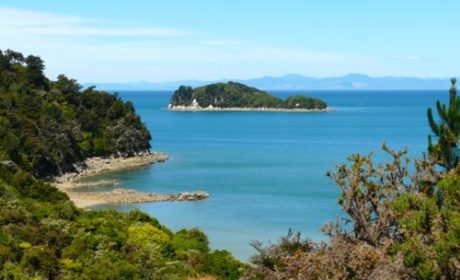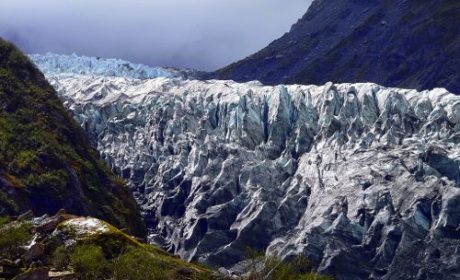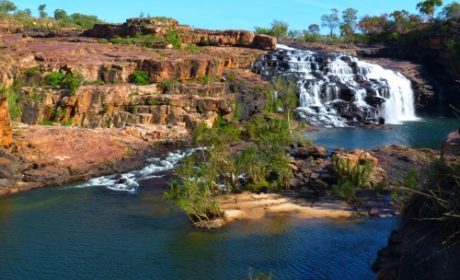Australia is known for its laid back vibe and expansive beaches. And, of course, snorkeling the Great Barrier Reef is at the top of many boomer bucket lists. But there is so much more to see and do in this gorgeous corner of the world.
To see the best of the best, a long, well-planned boomer road trip offers the ultimate in an Australia getaway. Guest contributor, Leslie Connor from Empty Nesters Travel Insights, who calls NSW Australia home, is here to show us a few incredible things to see while on a 12-day Sydney to Melbourne road trip.
Table of Contents
Sydney to Melbourne 12-day road trip itinerary overview
Melbourne is only an hour and a half flight from Sydney, but there is so much to see on Australia’s southeast coast. Active boomers can explore national parks to discover history and culture as well as enjoying delicious culinary experiences on a road trip from Sydney to Melbourne.

We have lived in Sydney, Melbourne, Canberra and now reside on the South Coast of New South Wales. My family and I have traveled these routes so often that I am very familiar with them.
So I’m recommending an Australian road trip that takes you on a 1,424 kilometer (885 mile) drive through the highlights of both the coastal and inland routes from Sydney to Melbourne. The total driving time is only 18 hours.
But why rush through one of the best parts of Australia? This 12 day itinerary from Sydney to Melbourne helps you make the most of the sightseeing opportunities along the way.
Day 1 and 2: Sydney to Bowral and the Southern Highlands
(Stay: Bowral 1-2 nights)

Heading out of Sydney along the Hume Highway, an hour and half’s drive brings you to the Southern Highlands and the towns of Bowral, Moss Vale and Mittagong.
Before turning off at Picton, you will notice Sydney Skydives, where more adventurous travelers can take the opportunity for a tandem jump. Skydivers enjoy a bird’s eye views over the region as they float down to the landing fields.
In these highland towns you’ll find graceful old buildings lining leafy avenues, cafes and restaurants to enjoy a leisurely meal, with antique shops and art galleries to browse through.

My favorite time of year in Bowral is “Tulip Time”. Between September and November, many magnificent public and private gardens are open for exhibition. Corbett Gardens in Bowral is mass planted with over 75,000 tulips providing a spectacular, colorful display.
The region also has a range of cool climate wineries where you can sample the local produce and national parks to explore.
Morton National Park and the Fitzroy Falls are a 20 minute drive from Bowral. Here you will find six kilometers of walking tracks and timber boardwalks.
Wander through cool rainforest, listening to the sound of lyrebirds echoing through the native bushland. Enjoy the many lookouts with breathtaking views over the sandstone escarpment and cascading waterfalls into the rainforest valleys below.
More active boomers might enjoy a 30 kilometer cycle from Fitzroy Falls to the Kangaroo Valley below. The route has some challenging downhill runs, but you can experience the best of the Morton National Park. You are also bound to meet some local wildlife along the way.
Boomer Travel Tip
The Southern Highlands has no shortage of luxury hotels and boutique bed and breakfast accommodation to choose from. Start your hotel search here.
Day 3 and 4: Southern Tablelands and Canberra
(Stay: Canberra 2 nights)

Ten minutes south of Bowral is the historic 1830’s town of Berrima. Many of the colonial sandstone buildings are well preserved, including the old courthouse and jail.
Browse through a plethora of the arts, crafts and antique stores. Maybe even pop in for refreshments or a meal at the Surveyor General Inn, Australia’s oldest continually licensed pub.
During the two hour drive to Canberra, Australia’s “bush capital”, you will pass through the grazing pasturelands of the Southern Tablelands. You may have heard that Australia was “built on the sheep’s back” and this area certainly remains the heart of Australia’s merino wool industry today.

The Hume Highway today bypasses the many old pastoral towns, but you will still get a great glimpse of rural Australia. Deserted old farmhouses, windmills, and post and rail fences line the road. In spring you will certainly see newborn lambs frolicking in the paddocks.
Also look out for the iconic Aussie letterboxes along the road. Farmers recycle everything from tin cans to microwave ovens to place on a post at the end of their road for their mail deliveries.
If you are interested in learning a little more about the Merino wool industry, you can take a short detour at Goulburn to visit the Big Merino.
At Yass, turn off onto the Barton Highway towards Canberra. Once home to some of the area’s largest sheep stations, the region now produces award winning cool climate wines.
At Murrumbateman you have the opportunity to call in at some of the cellar doors to sample the local produce. Should you choose to bypass Canberra, this is also where you will turn off towards the south coast.
Canberra: Australian Capital Territory

Parliament House and the Australian War Memorial are of course the most famous attractions in Canberra, however there are many other interesting things to explore. Whether you are interested in arts and culture, outdoor activities or great culinary experiences, Canberra has something to offer everyone.
Spring is the best time to visit Canberra’s gardens. The native plant collections in the National Botanical Gardens are in full bloom, with free guided tours available.

Commonwealth Park is the perfect place to enjoy the lake foreshore and browse through the sculpture displays. In spring the park comes alive with “Floriade”, a spectacular garden exhibition with literally thousands of colorful blooms. There are also many horticultural displays and festivals held during October.
Lake Burley Griffin is the centerpiece of Canberra, where you will find most of the museums and art galleries. You can walk or cycle around the 40 kilometers of lakeside walkways, enjoy a paddle boat ride, or cruise around the lake.
Bushwalkers have plenty of opportunity to explore Canberra’s bush setting and national parks. Black Mountain, Mount Ainslie and Mount Stromlo all have many marked walking trails through the local bushland. These National Parks are a natural habitat for over 500 species of wildlife, so look out for the birds and native animals on your hike.
If you are a little more adventurous, you can enjoy a bird’s eye view of the city with a sunrise hot air balloon ride floating over Canberra.
Enjoy an ethnic meal in Dickson, a sumptuous meal in one of the many restaurants in Braddon, or head out to Kingston for a cafe meal on the foreshore.
Boomer Travel Tip
Canberra offers a great range of luxury hotels, bed and breakfast accommodation and private rentals. Start your search for hotels in Canberra here.
Day 5 and 6: Canberra to the South Coast
(Stay: Narooma 2 nights)

Heading south down the Federal Highway from Canberra towards the south coat you will soon turn off towards the rural towns of Bungendore and Braidwood. An hour south of Canberra, Braidwood is always my favorite stop to stretch your legs, walk along the historic streetscape, and taste one of the region’s best pies at the Braidwood Bakery.
Batemans Bay
The road winding road down the Clyde Mountain to Bateman’s Bay takes you through bushland and rainforest and across the Nelligen River. At the final bend you’re rewarded with a glimpse of the Pacific Ocean glittering in the distance.
Bateman’s Bay is a major seaside tourist resort, surrounded by the Clyde River and Pacific Ocean. Houseboats and river cruises sail up and down the river. Visitors and locals enjoy a range of fishing, surfing, jetskiing and watersports on the many unspoilt beaches. Book your activities here.
Enjoy fresh local fish and chips at the historic boatshed by the water, or relax with a coffee at one of the many waterfront cafes.
Boomer Travel Tip
MedjetAssist Members who are hospitalized 150 miles from home receive medical transport to a home-country hospital of choice. Memberships from $99.
Mogo
Ten minutes south, you will pass through the historic mining village of Mogo. The quaint old miners cottages now house a range of arts and crafts shops. The town also has a mining museum and zoo which are both well worth visiting.
Narooma
Another hour down the road, you will round a bend on the Princes Highway and understand why the aboriginal name, “Narooma” means “land of clear blue waters.” On a clear day, the waters are vividly blue. The long, sandy beaches of the popular tourist destination are uncrowded and unspoilt.

From July to November, stand along the shore to watch the whales breach during their annual migration. Taking a whale watching tour or fishing charter is another option.

You can also take a tour out to Montague Island, where you can snorkel with the colony of Australian and New Zealand fur seals.
From shore, walk or cycle along the 30 kilometers of pathway around the headlands, taking in some of the most beautiful coastal scenery. Along the way you will meet many of the locals, including the seals on the breakwall at Bar Beach.

If you fancy a round of golf, the Narooma Golf Club boasts the most spectacular scenery of any golf course in Australia, located on the headland with views up and down the coast.
Boomer Travel Tip
Narooma has a wide range of motels, self serviced apartments and bed and breakfast accommodation. Start your search for hotels in Narooma here.
Day 7 and 8: Narooma to East Gippsland, Victoria
(Stay: Lakes Entrance 2 nights)
Tilba
Fifteen minutes south of Narooma, take a short detour to Tilba, an historic cheesemaking town. The heritage listed weatherboard cottages have been lovingly preserved. Browse through the arts and crafts shops, sample the local produce and watch cheesemaking at the cheese factory.

Tilba is also the starting point for the half day hike to the summit of Mt Gulaga, an area culturally significant to the local indigenous people. The hike is physically challenging, passing through rainforest, waterfalls and old mine workings, giving you a true glimpse of the natural beauty of the area.
Far south coast, Bermagui

From Tilba, you will notice the pastures changing from sheep and crops to cattle. The region has long been a dairy and cheesemaking area. Heading towards Eden will take an hour and 20 minutes along the highway, or you can turn off towards Bermagui to take the scenic coastal route, which is 20 minutes longer.
Bermagui remains a working fishing village and popular seaside holiday town, where you can watch the day’s catch being brought in off the wharf. This coastal drive towards Eden takes you past some of our most beautiful coastal scenery and secluded, deserted beaches.
Arriving at Eden, a former whaling town, it is worth stopping to have a look at the whaling museum, before heading on down the Princes Highway and into Victoria. Do make sure you fuel up at Eden, as there won’t be another town for around two hours.
East Gippsland: Victoria
Heading south from Eden towards Victoria’s East Gippsland, you will pass through around 100 kilometres (62 miles) of cool pine forest. Stopping at one of the many roadside rest stops along the way, you will hear the song of lyrebirds and bellbirds echoing through the bush. You may even spot a kangaroo, wombat, echidna or kookaburra in their natural habitat.
Marlo
Two hours from Eden, it is well worth taking a detour towards the seaside town of Marlo. Sand dunes and scrub line the road until French’s Narrow, where you will be rewarded with beautiful views of the Mouth of The Snowy River Estuary.

Here the mighty Snowy River ends her 350 kilometer (217-mile) journey from Mount Kocsiusko. Littoral Rainforest is a conservation area for a range of local fauna and flora, with walks through endangered rainforest, lined with banksias and native scrub. This is also a native habitat for a number of threatened native species.

A two kilometer (1.25 mile) walk takes you through cool rainforest, rolling sand dunes and past spectacular coastal scenery to the surf beach at French’s Narrows. Take a dip in the ocean if you don’t mind cold water.
Lakes Entrance
(Stay: 2 nights)
Just one more hour’s driving brings you to one of our favorite stopovers en route to Melbourne. Lakes Entrance is Australia’s largest inland waterway, surrounded by smaller riverside towns.

We enjoy walking among the boats around the marinas, strolling along the waterside boardwalks, or relaxing on the beach. The quiet serenity of one of the riverside fishing spots is a very pleasant way to while away the morning, as is exploring the coastal villages of Metung, Nicholson and Swan Reach.

From here you can either walk or cycle along the East Gippsland Rail Trail to Nicholson and back. The eight kilometer (5 miles) track takes you through forests, past coastal views of the lakes and across historic wooden rail bridges.
Boomer Travel Tip
Lakes Entrance offers a wide range of hotel, motel and bed and breakfast accommodation while you explore the region. Start your search for hotels in Lakes Entrance with us!
Day 9: Lakes Entrance to Wilson’s Promontory
(Stay: Foster 1 night)

From nearby Bairnsdale, a two hour drive into the Gippsland region of Victoria brings you to Foster. From here you can visit the southernmost tip of mainland Australia at Wilson’s Promontory National Park, Victoria’s largest coastal wilderness.

Relax on one of the many secluded beaches, or take a three hour, 2 ½ kilometer (1.5 mile) hike through eucalyptus bushland and cool rainforest. The park is a wildlife sanctuary, so it is likely you will come across kangaroos, emus and echidnas on the way. The area is also a popular diving location, with boulders caves, starfish and coral to explore.
Day 10 and 11: Foster to Phillip Island
(Stay: Cowes 2 nights)

From Foster we head off on a 100 kilometer drive to Phillip Island. The Island is famous for its Grand Prix race circuit, where racing enthusiasts can do a lap with an experienced race car driver.
It is also a wildlife sanctuary, where you can enjoy getting up close with some of the locals. Australia’s largest wild fur seal colony can be seen at Seal Rocks on the rugged Bass Coast.

At dusk, sit on Summerland beach and enjoy the Penguin Parade (purchase tickets here) as dozens of little fairy penguins waddle in back to their burrows from a day’s fishing.

Boomer Travel Tip
Phillip Island has a great range of hotel, motel and bed and breakfast accommodation. Start your search for hotels in Phillip Island with us!
Day 12: Phillip Island to Mornington Peninsula and finally, Melbourne

From Phillip Island it is only two and a half hour’s drive to Melbourne around Westernport Bay to the Mornington Peninsula, one of the more affluent areas just outside Melbourne.
The area has over 200 vineyards and 50 cellar doors where you can sample the local produce, as well as a range of artisan cheeses to taste. If you feel in need of a little rejuvenation after your 1400 kilometer (870 mile) drive, why not pop into the Peninsula hot springs for a day spa and massage
While you could realistically do this drive in two days, A leisurely ten to 12 day road trip gives you time to fully enjoy the many varied experiences on offer between Sydney and Melbourne.

Important things to know while on a road trip from Sydney to Melbourne.
- We drive on the left hand side in Australia
- Once outside the city areas, it will be at least 100 kilometers (62 miles) between towns, so make sure to keep your fuel tank half full.
- Avoid driving at dusk or sunset, as these are the danger times for kangaroos and wombats to wander onto the roads, causing accidents.
- Always keep a bottle of water in the car with you in case you do get stranded on a hot day
- Eftpos (electronic funds transfer) is universally accepted, however some smaller stores will have an AUD 10 purchase limit, so it is a good idea to carry a small amount of cash for smaller purchases.
- Avoid approaching any native wildlife you may come across. They may look cute, but can become aggressive if they feel threatened.
Not ready to end your Sydney to Melbourne drive? Continue your journey beyond Melbourne to experience a world renowned hiking area along the Australian coast. Check out our tips for a Great Ocean Walk Itinerary.




